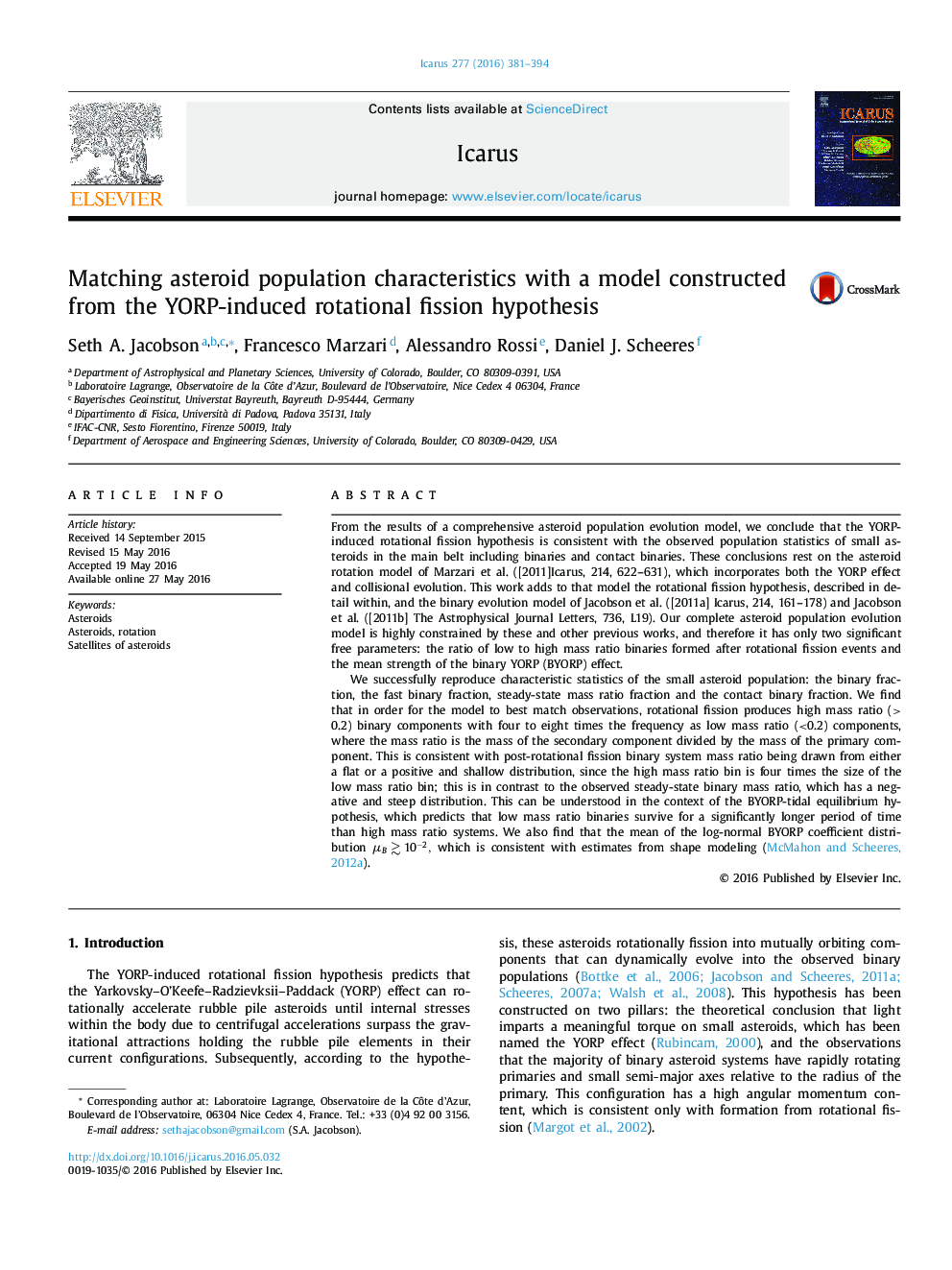| Article ID | Journal | Published Year | Pages | File Type |
|---|---|---|---|---|
| 8134981 | Icarus | 2016 | 14 Pages |
Abstract
We successfully reproduce characteristic statistics of the small asteroid population: the binary fraction, the fast binary fraction, steady-state mass ratio fraction and the contact binary fraction. We find that in order for the model to best match observations, rotational fission produces high mass ratio (> 0.2) binary components with four to eight times the frequency as low mass ratio (<0.2) components, where the mass ratio is the mass of the secondary component divided by the mass of the primary component. This is consistent with post-rotational fission binary system mass ratio being drawn from either a flat or a positive and shallow distribution, since the high mass ratio bin is four times the size of the low mass ratio bin; this is in contrast to the observed steady-state binary mass ratio, which has a negative and steep distribution. This can be understood in the context of the BYORP-tidal equilibrium hypothesis, which predicts that low mass ratio binaries survive for a significantly longer period of time than high mass ratio systems. We also find that the mean of the log-normal BYORP coefficient distribution μBâ³10â2, which is consistent with estimates from shape modeling (McMahon and Scheeres, 2012a).
Related Topics
Physical Sciences and Engineering
Earth and Planetary Sciences
Space and Planetary Science
Authors
Seth A. Jacobson, Francesco Marzari, Alessandro Rossi, Daniel J. Scheeres,
